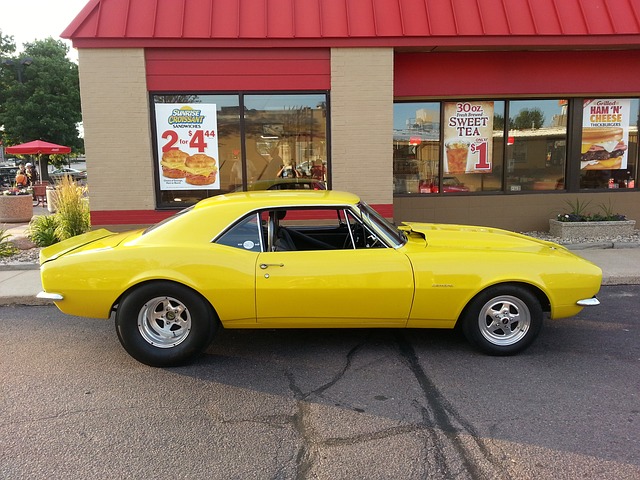
Used Car Checklist – Purchase and Inspection
In this blog, I have provided information and checklist to aid in the inspection and purchase of a used car.
TECHNICAL SERVICE BULLETINS (TSBs)
Check on several candidate web sites, e.g., https://www.CarComplaints.com, for the car you are inerested in, for expensive or safety TSBs. This will show what the problem areas of the car have been. Concentrate on the checklist items that cover the TSB problem areas.
CARFAX or ACCIDENTS
Obtain a CARFAX from a dealer if the car is being sold by a dealer. Obtain a CARFAX via the Internet if buying from an individual. This will reveal the current owner and all past owners. The person selling the car may not be the owner. Be sure and see the car title with the owner’s name on it before purchasing. Be sure the owner has signed the title under the seller category before purchasing the car. Any car service business can get you the vehicle history via the Vehivle Identification Number (VIN). This will also reveal much of the same information as a CARFAX including any accidents. If a CARFAX is difficult to obtain, it may be more time and money prident to go to a local car service business and have that business run a VIN check for a few dollars.
ENGINE
Make sure the car is cold, has not been started, when you perform the following tests. If the car is warmed up, come back another time and specifically ask to see the car when it has not been started for several hours:
a. Start the car while observing the exhaust pipe (have someone else start it while you are looking at the exhaust pipe). If blue smoke comes out when starting the car and for a minute or so afterwards, it needs a valve job or engine rebuild.
b. Check to see if the choke comes on. Is the idle high enough to keep the car running with lights on, brake pedal pushed down? The idle should be around 1500 rpm or a good amount above normal, warm engine, idle speed (about 700 – 800 rpm).
c. Check for a smooth idle with the choke on. Does the car vibrate excessively? Feel and listen to the exhaust by the exhaust pipe. Does the exhaust have an irregular beat or flow to it? If it is irregular or vibrating, the car is not firing on all cylinders. This can be verified with an induction timing light by hooking the light up to the battery and the induction pickup to every spark plug in turn and seeing if the light firing pattern is constant and the same for all plugs.
If possible, avoid cars with timing belts (most 4 cylinder cars after mid-80s) and rather opt for a car with a timing chain. You can determine which one the car has by a number of methods:
a. Take the oil filler cap off (usually on the valve cover near the air cleaner) and look inside to see either a rubber timing belt or metal timing chain.
b. Call the car dealer for that make of car and ask the service department to tell you which type of timing (belt or chain) mechanism is in that make and year of car
c. Look inside the service manual for the car to see if there is a replace timing belt item at the 50,000 mile mark.
Start driving.
Does the choke stay on long enough for the car to warm up and not die when coming to a stop?
Anytime after the car has warmed up to normal running temperature, observe the exhaust when you push the pedal to the floor and right after you let off the gas as fast as you can from a 2/3 or more floored pedal position: If blue smoke comes out the back or you see blue smoke in the rear view mirror, the car needs a ring job.
Does the engine or car hesitate when you stomp on the gas pedal? Does the engine or car hesitate when you give a little gas and pull away from a stop?
If time and money permits, go to a mechanic and stay to observe (if time permits) a compression test. A compression test determines the compression of all cylinders and requires removing the spark plugs one at a time to insert a pressure sensitive screw in device for measuring compression in that cylinder. A compression test will reveal a bad compression ring around the pistons, bad valves or misadjusted valves, a leaking head gasket and a number of other expensive repair problems. If the car is expensive and repairs would be a burden, once you have it narrowed down to this car, I highly recommend a compression check. Readings should be about 120 pounds per square inch for each cylinder and there should be no more than a 5% variation between all the cylinder readings. Anything below 110 is questionable and below 100 is unacceptable.
TRANSMISSION
If it is a manual transmission, use first gear to see if the car jerks when you start from a standstill in first gear. If the car shudders or vibrates, the clutch and fly wheel are near the end of their life. If the car makes any grinding noises or the whole car jerks, the transmission gears are worn, or have broken teeth. Hold the clutch pedal in and see if you hear a grinding noise like something going in a circle with the engine speed. If you hear something from near where the transmission meets the engine, the throw out bearing is worn out. Make sure you try reverse.
If it is an automatic transmission, put it into reverse from a standstill. If you hear a major clunk, it’s near the end. Shift the transmission from low to D2 at about 5 miles per hour. If it does not go into gear right away or you hear a slipping sound, it is near the end. Shift from D2 to D at about 40 miles per hour and let your foot off the gas immediately. See if it goes into gear without a clunk or slipping.
Check the transmission fluid for the color and fluid level. Fluid level must be checked while car is running. Clear or red color and good fluid level indicates all is well. Brown or black color indicates a problem – be ware.
For 4 Wheel drives and small pickups (make sure you can shift into 4 wheel drive without having to stop and lock the hubs of either the front or rear wheels unless you don’t mind doing this).
BRAKES
Come to a stop very slowly. Do you hear and grinding noises from the wheel area? Do you hear any screeching, high pitch, noises from the wheels? Brake pads or rotors need replacing. Come to a stop by pressing on the pedal with medium force. Do you feel any vibration or shuddering from the wheels or in the car as you apply the brakes? If so, rotors are in need of resurfacing or replacement. Try a hard breaking action in a safe parking lot. See if the car pulls the steering wheel one way or another. This is best seen by letting go of the steering wheel when braking hard (therefore safe – no traffic – area required.) Brake going backwards and check for the same things as before. When stopped does the pedal keep going down to near the floor? If the pedal keeps moving while stopped, the master cylinder leaks or the rotors leak, or there is a lot of air in the line. In any case, this is a bad sign and could be expensive, about $300.
AXLES/U-JOINTS
When starting out from a stop, are there any clunking noises coming from under the car near where the drive shaft meets the differential (by engine in a front wheel drive car or in the middle of the rear axle of a rear wheel drive car)? When you put the transmission in drive or reverse, do you hear a clunking noise from under the car near where the drive shaft meets the differential? When you give a lot of gas (press the pedal down to the floor suddenly), does the car jerk a bit or make a clunking noise? This would indicate worn U-joints.
BODY
Look under the car for rust and anything unusual, e.g., lots of oil somewhere, things hanging down below the axles, etc. Look on top of the car on the roof for rust or holes. Check the fender wells for rust. Check inside the trunk (under the carpet) for rust, a spare tire jack and a spare tire. Check the condition of these things. Check for bondo, especially on newly painted areas or cars by knocking with your knuckles on rust prone areas (around sharp corners and near the wheel wells and bumpers) to see if it sounds differently (more hollow) than on metal areas.
FRAME
Once you’ve narrowed the car down to a possible buy, have someone follow you while you’re in the car, or follow someone driving the car and see if it goes down the road straight – do the front and rear wheels line up when the car goes straight down the road?
SUSPENSION
Push down on the corners of the car on top of the body hard and let go suddenly. If the body lurches up and stays put with litle to no bouncing, less than one inch, suspension in that corner is good. Test all four corners. If the body bounces up and down a few times or over more than 2 inches, the suspension is bad.
TIRES
Check to see if there are any bulges on the side walls of the tires. There should be 1/16 of an inch of tread, top of Lincolns head to edge of a one cent coin, on the tires. If so, bad tire, reduce offer and if purchasing, replace immediately. See if all four tires are the same. See if correct pressure 35- 44 Pounds per square inch (PSI) in each tire. Check for uneven wear – outside ,inside of tire only, middle of tire. Uneven wear is indicator of alignment problems with potential expensive repair.
LIGHTS
Try all the lights, parking, turn signals, stop lights, high beam, interior dash and dome lights by walking around the car and checking them all.
WASHER/WIPER
Try the windshield wiper on all speeds, Try the wiper fluid for squirting onto the windshield.
HEATER/DEFROSTER/VENT
Turn the heater on. See if you smell any antifreeze in the car while driving with the heater on or in the engine compartment after you come back to the owner’s place. Check the blower motor on all speeds from low to high with the heater, defroster, vent and air conditioner (if so equipped).
AIR CONDITIONING
See if it blows cold out of all the vents.
DOOR LOCKS/CLOSINGS
Check the keys to see if you can lock/unlock the doors and trunk. See if the doors close well.
Drive the car at highway speeds 60 mph to 70 mph for a while and listen for noises and feel the response of the car, transmission and engine to gas pedal changes. Does it feel responsive – does a movement on the pedal make things happen without a delay, stumble, pause, clunking noise? Does it vibrate, drive jerky while holding the gas pedal steady or makes any other exhaust noise? If so, a car that does not do this would be better.
Do not buy the car until the current owner or you gets an emission test that you can use to register the car!
CHRISTIANS: DO NOT BUY ANYTHING UNTIL YOU GET THE GREEN LIGHT FROM GOD.



